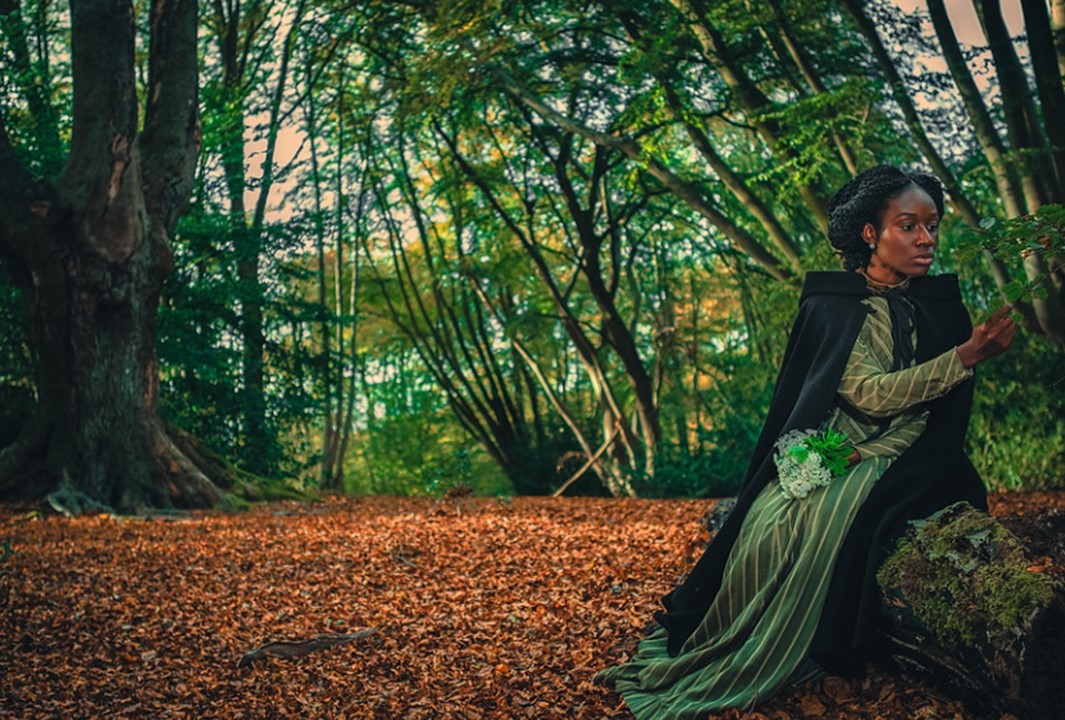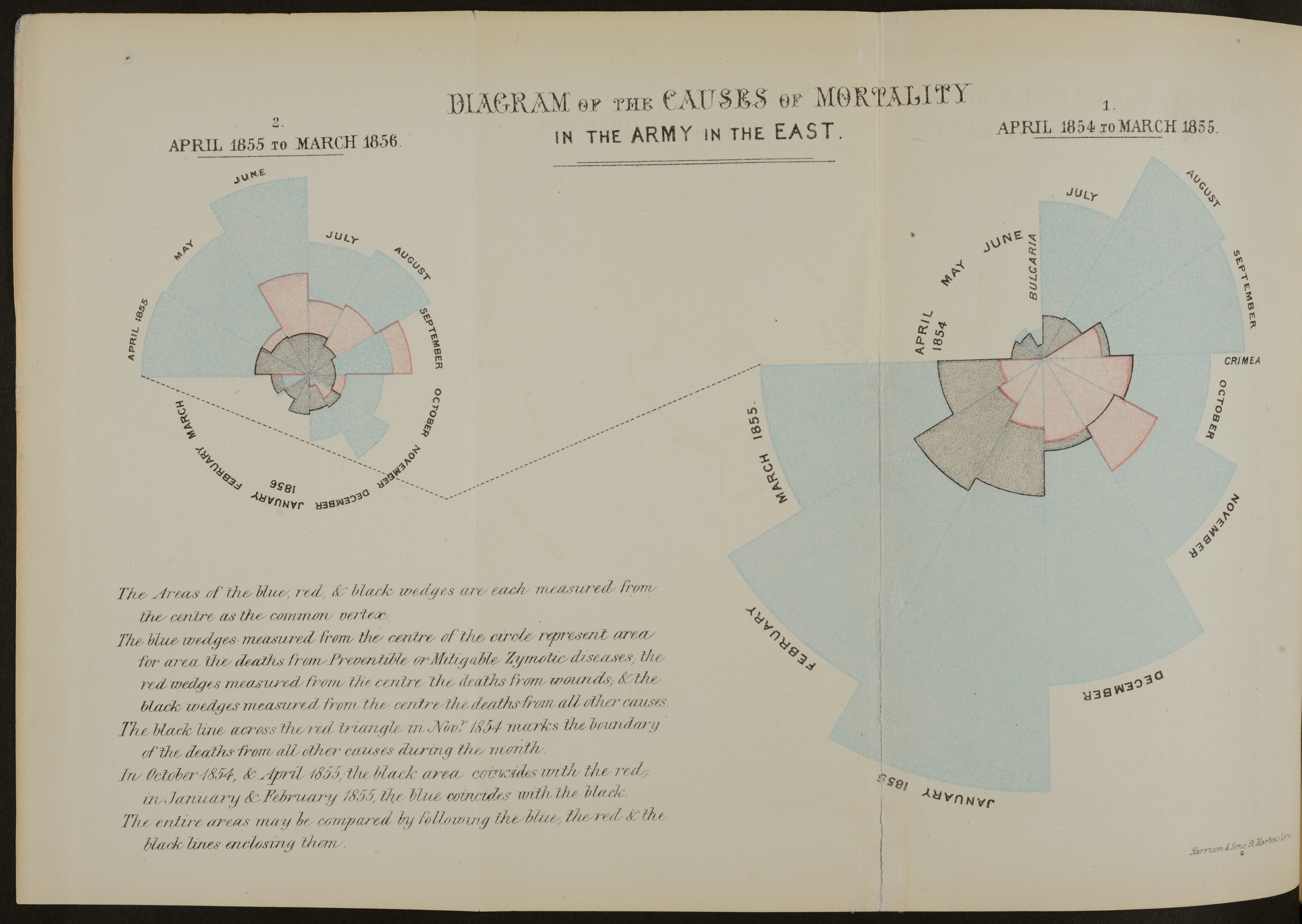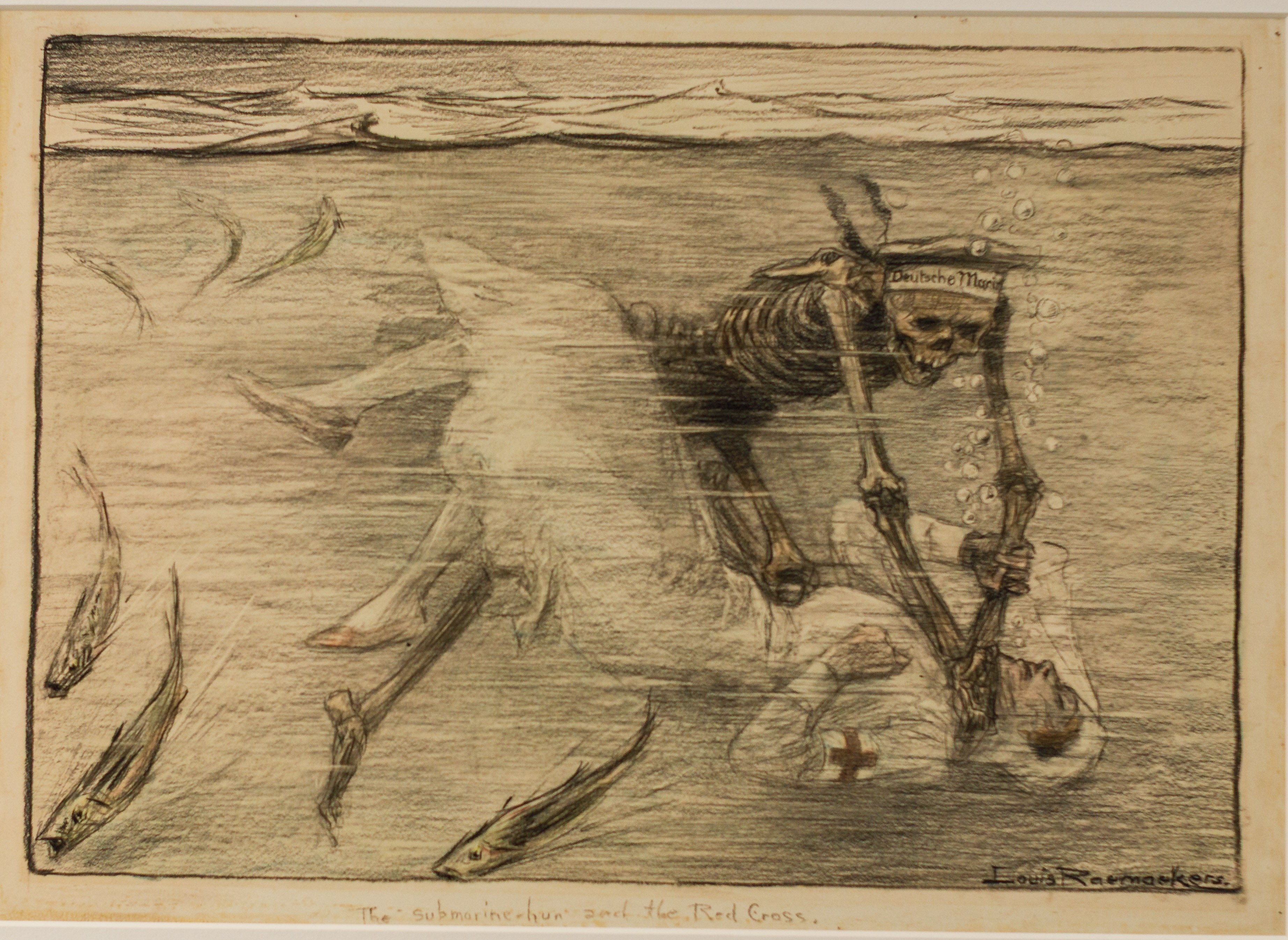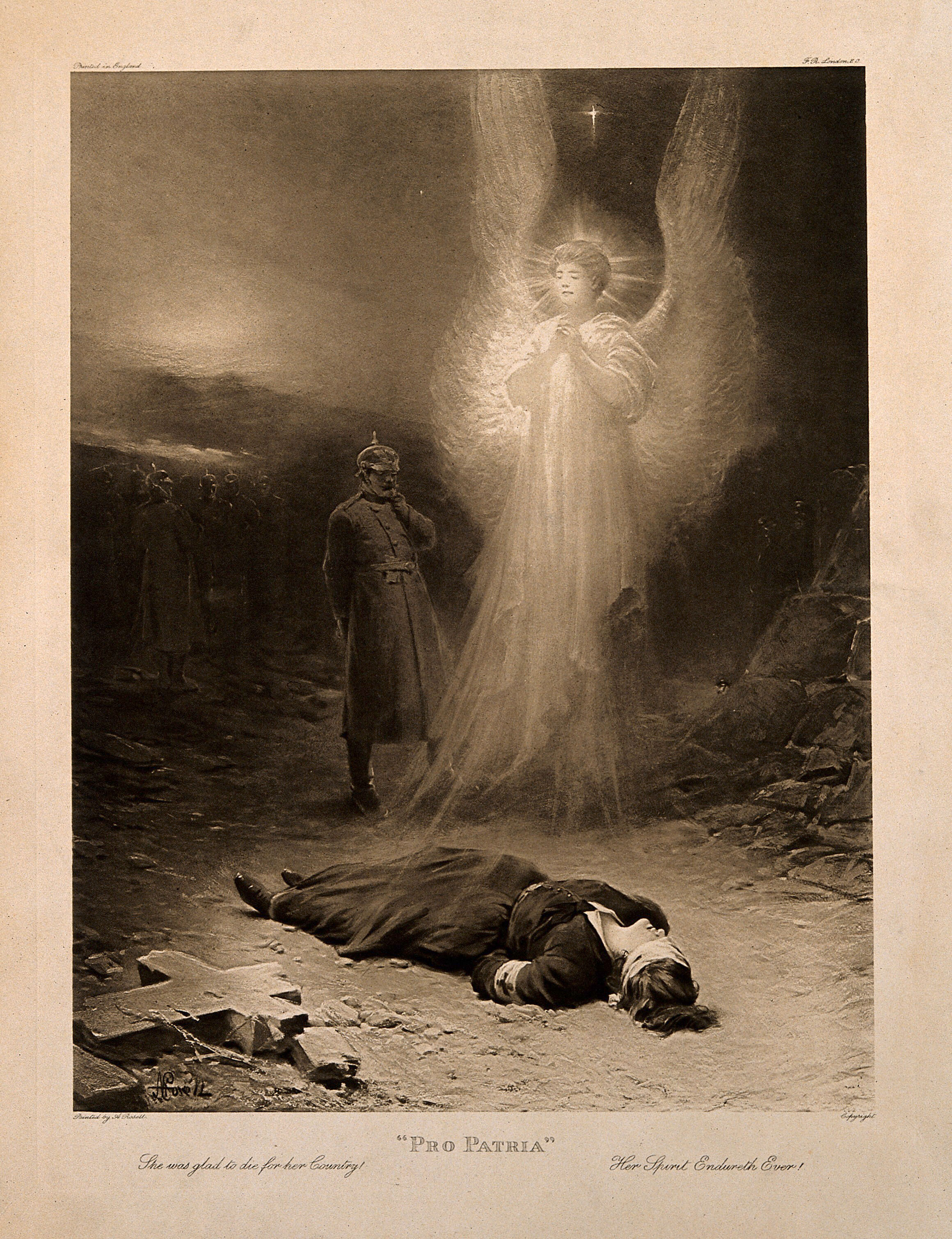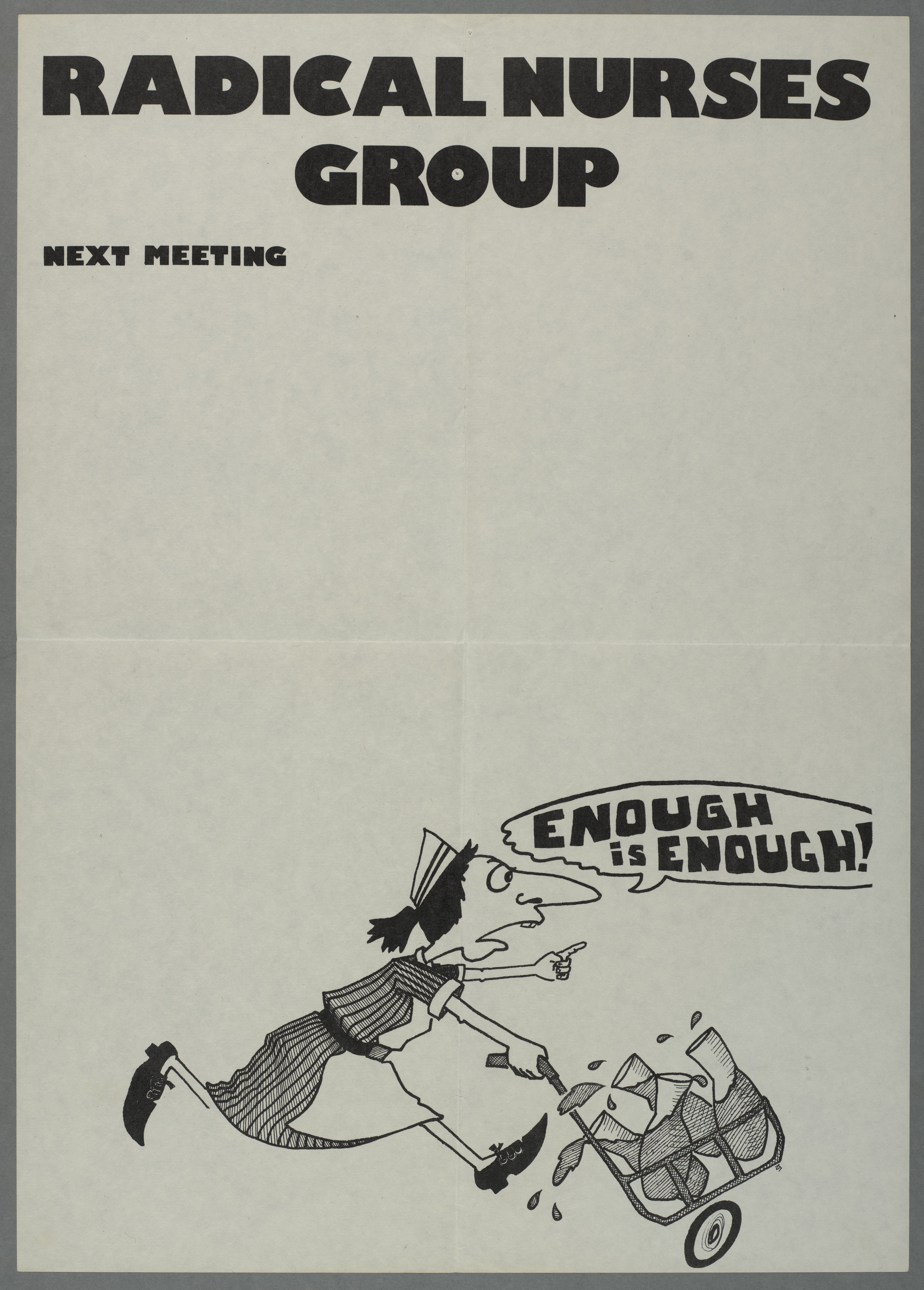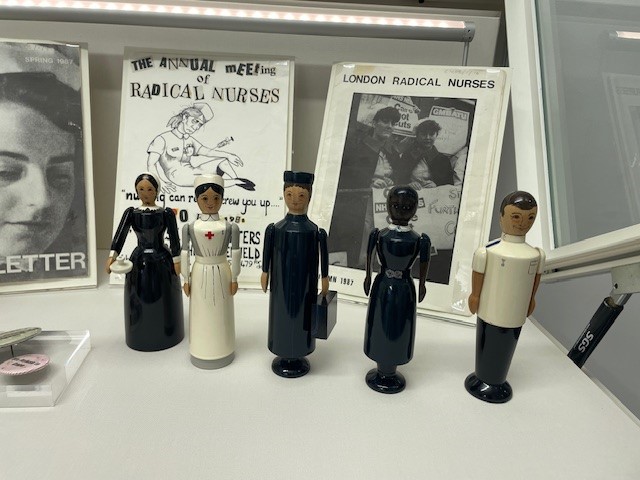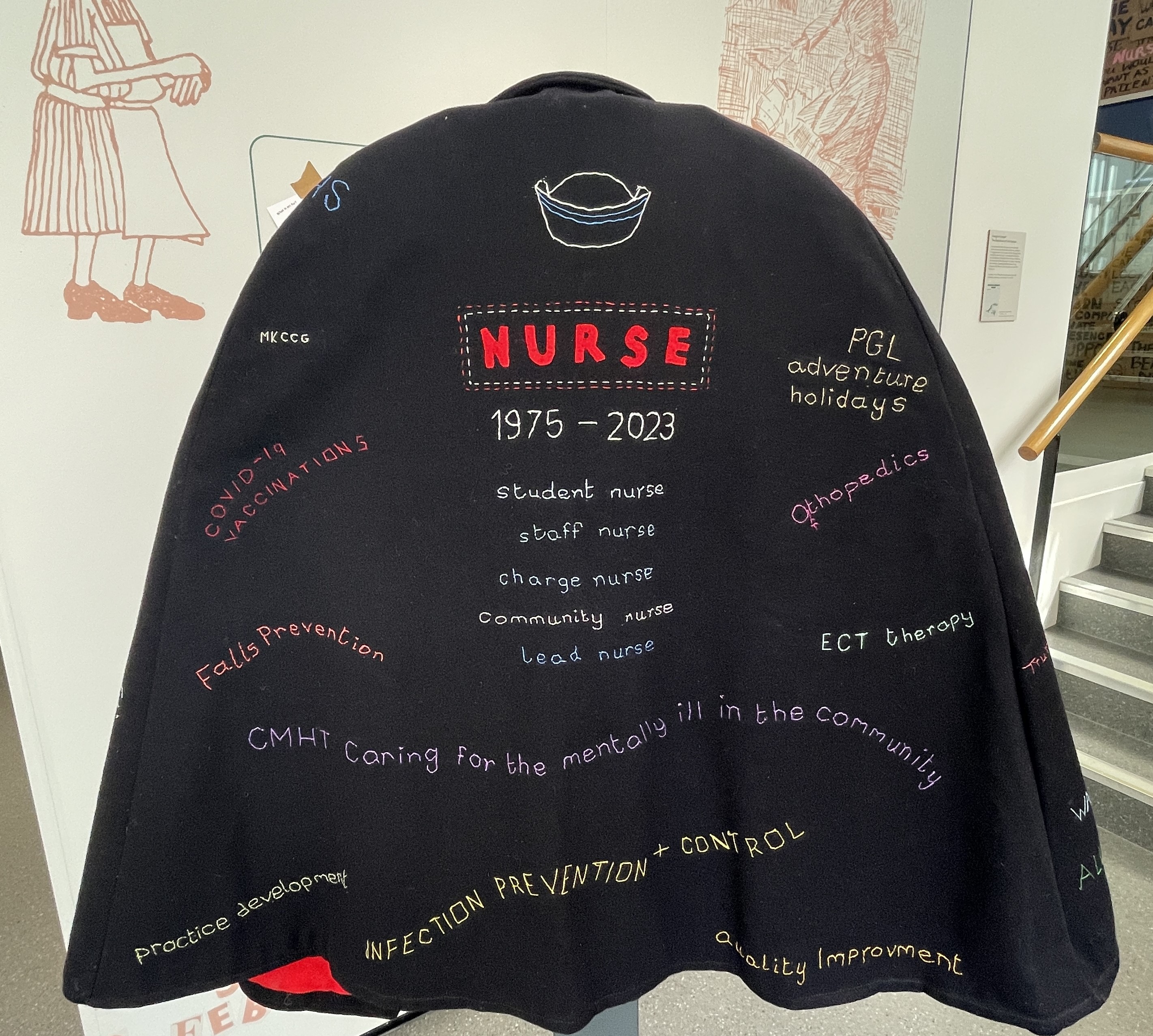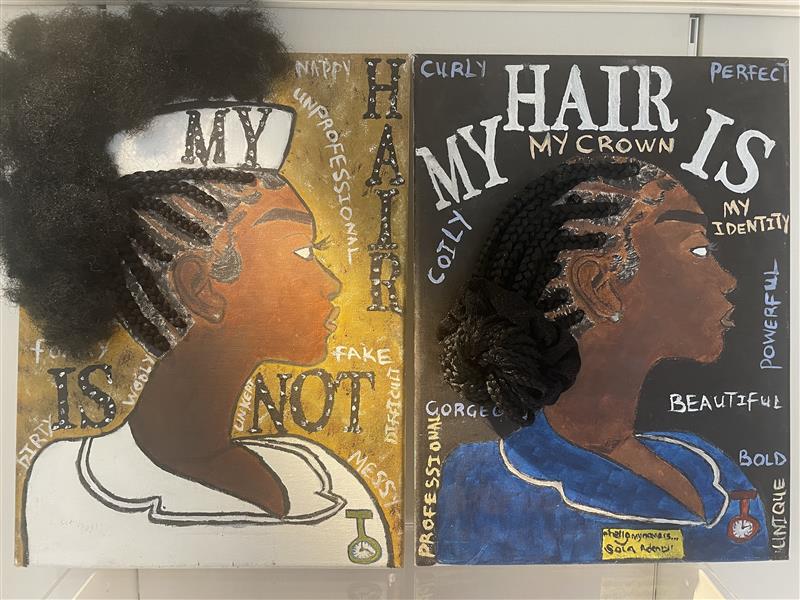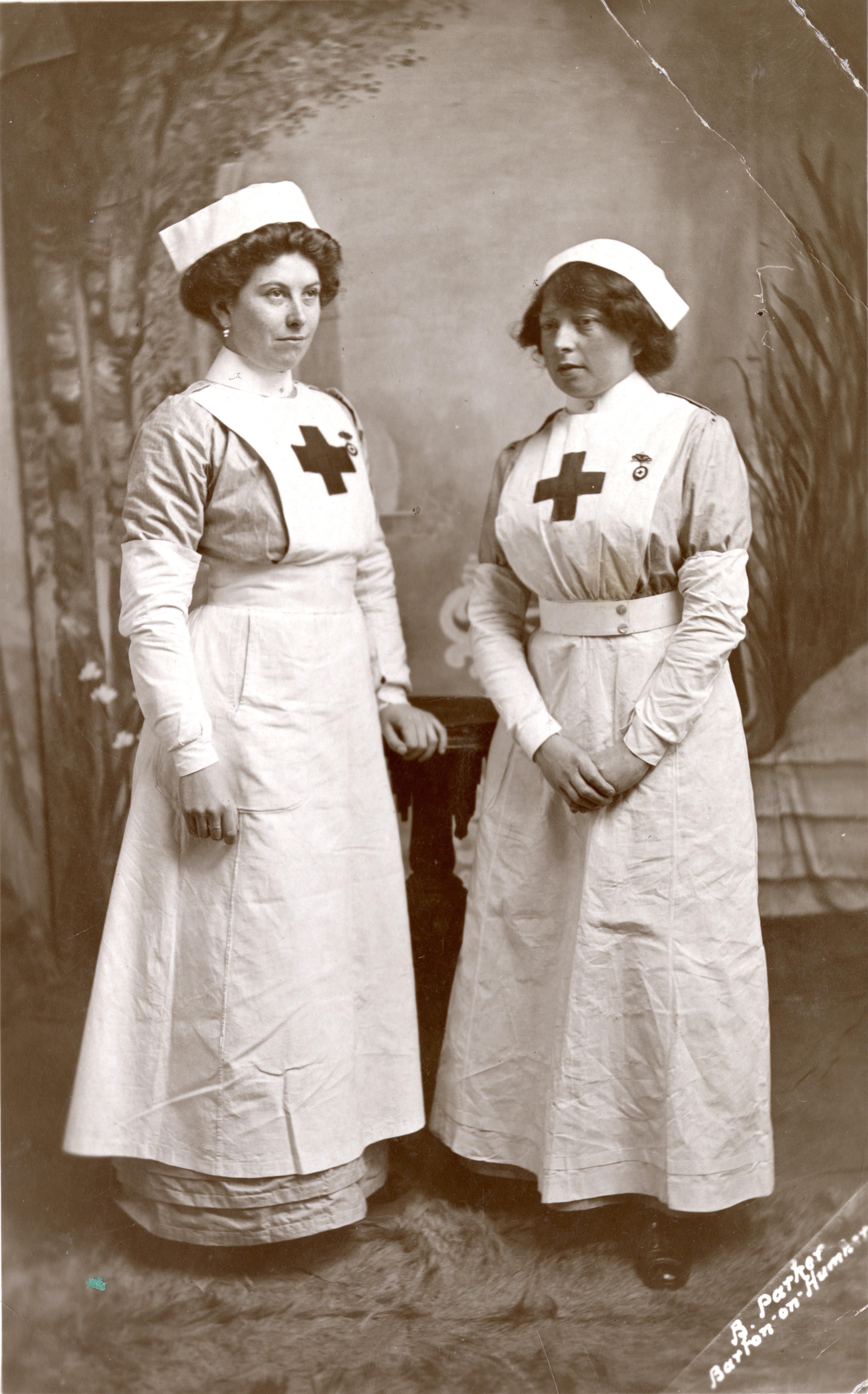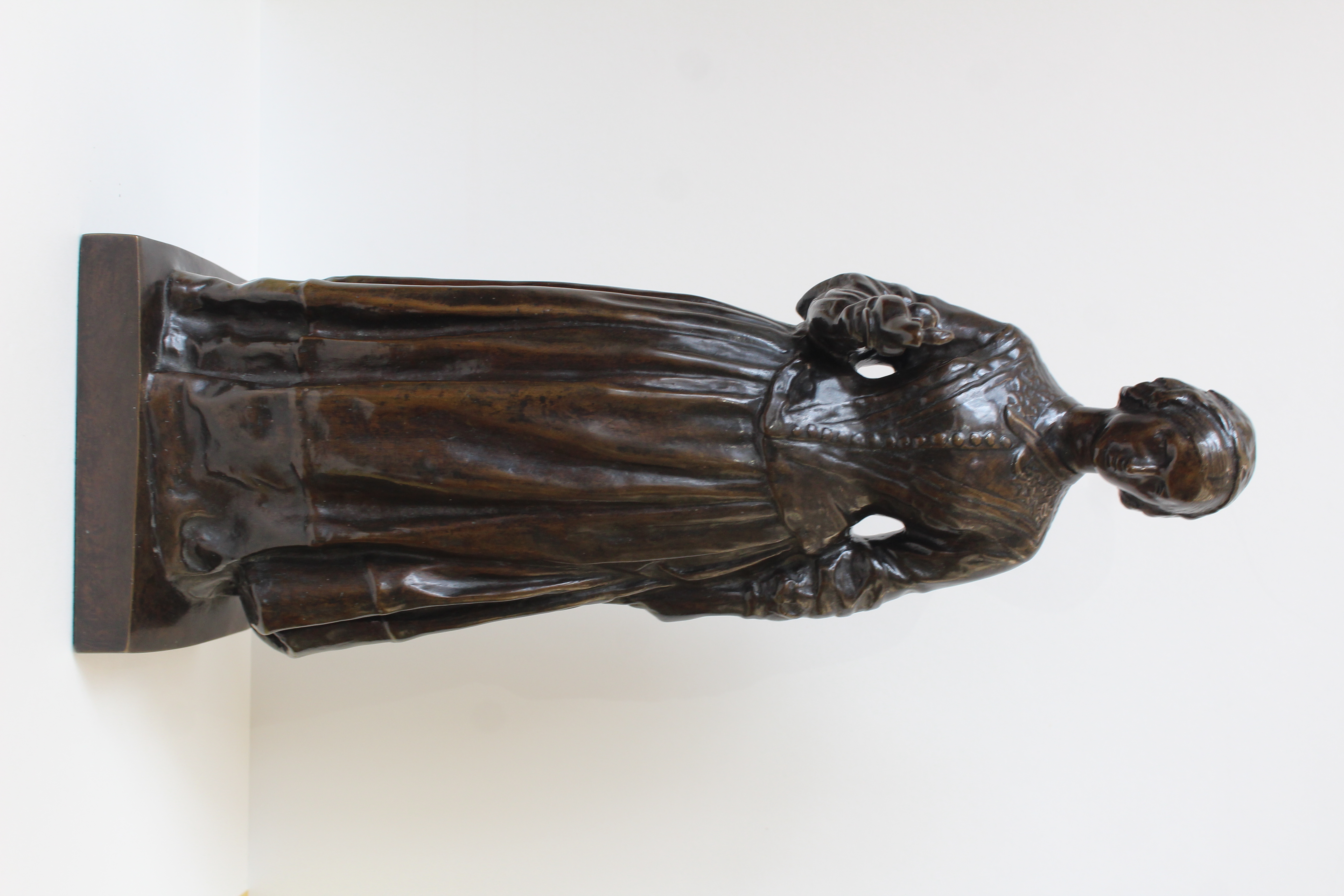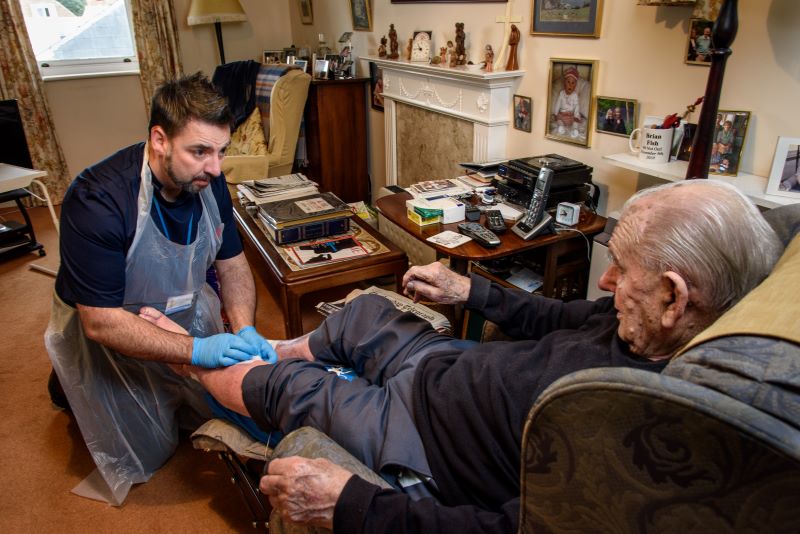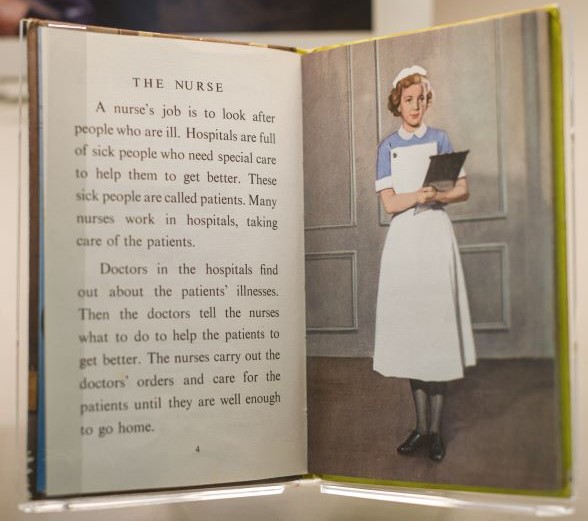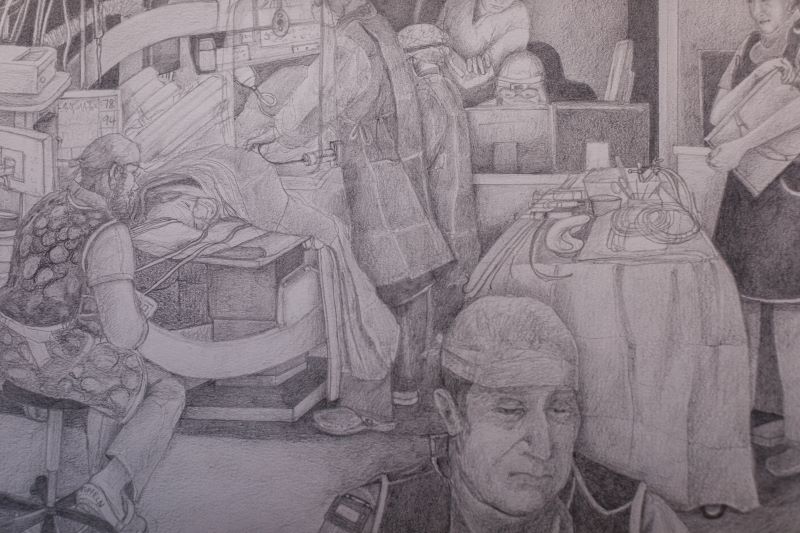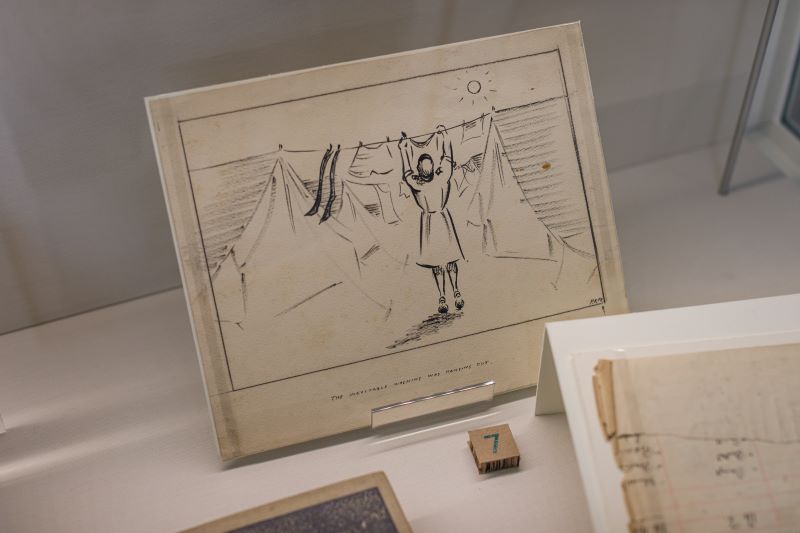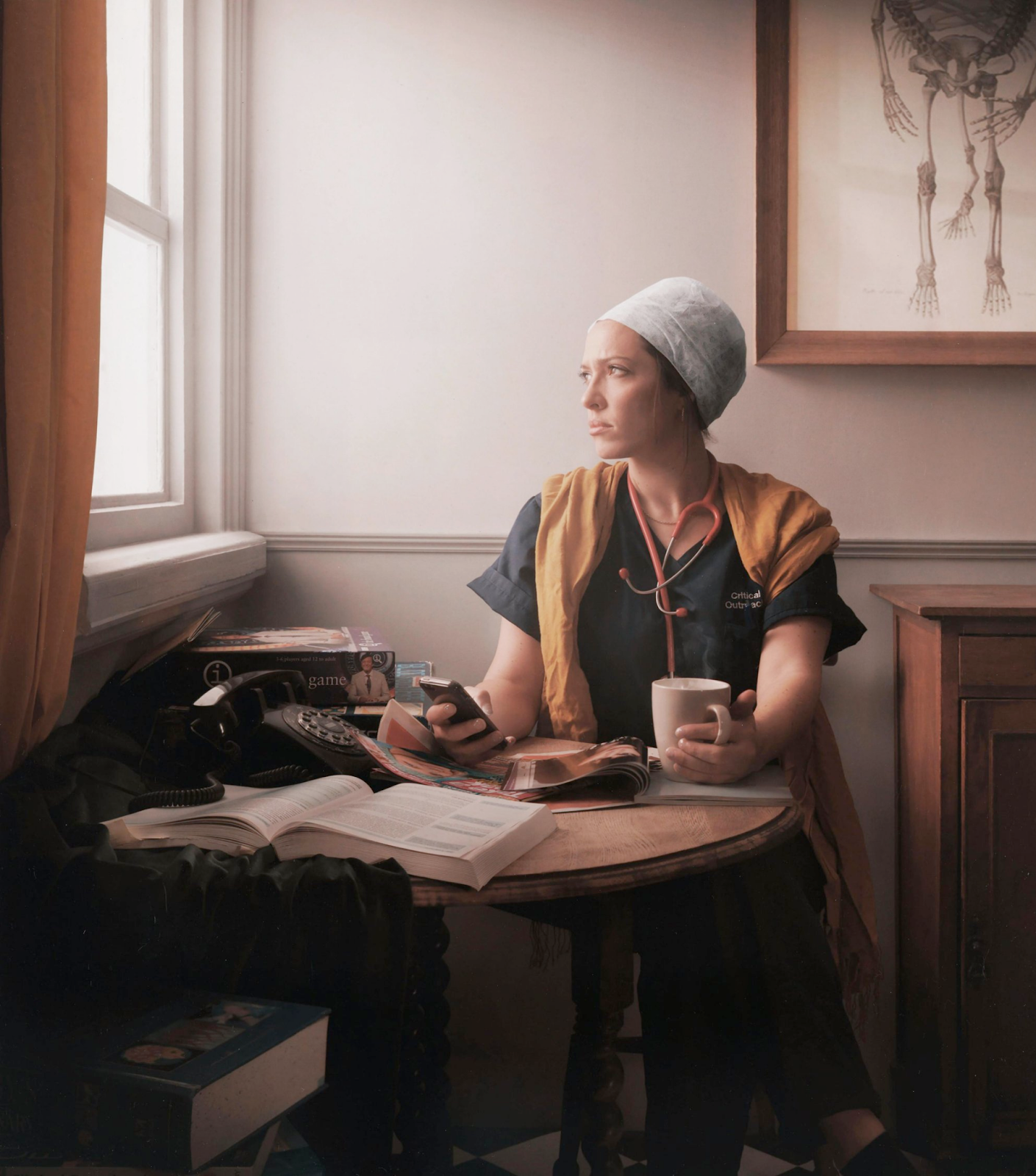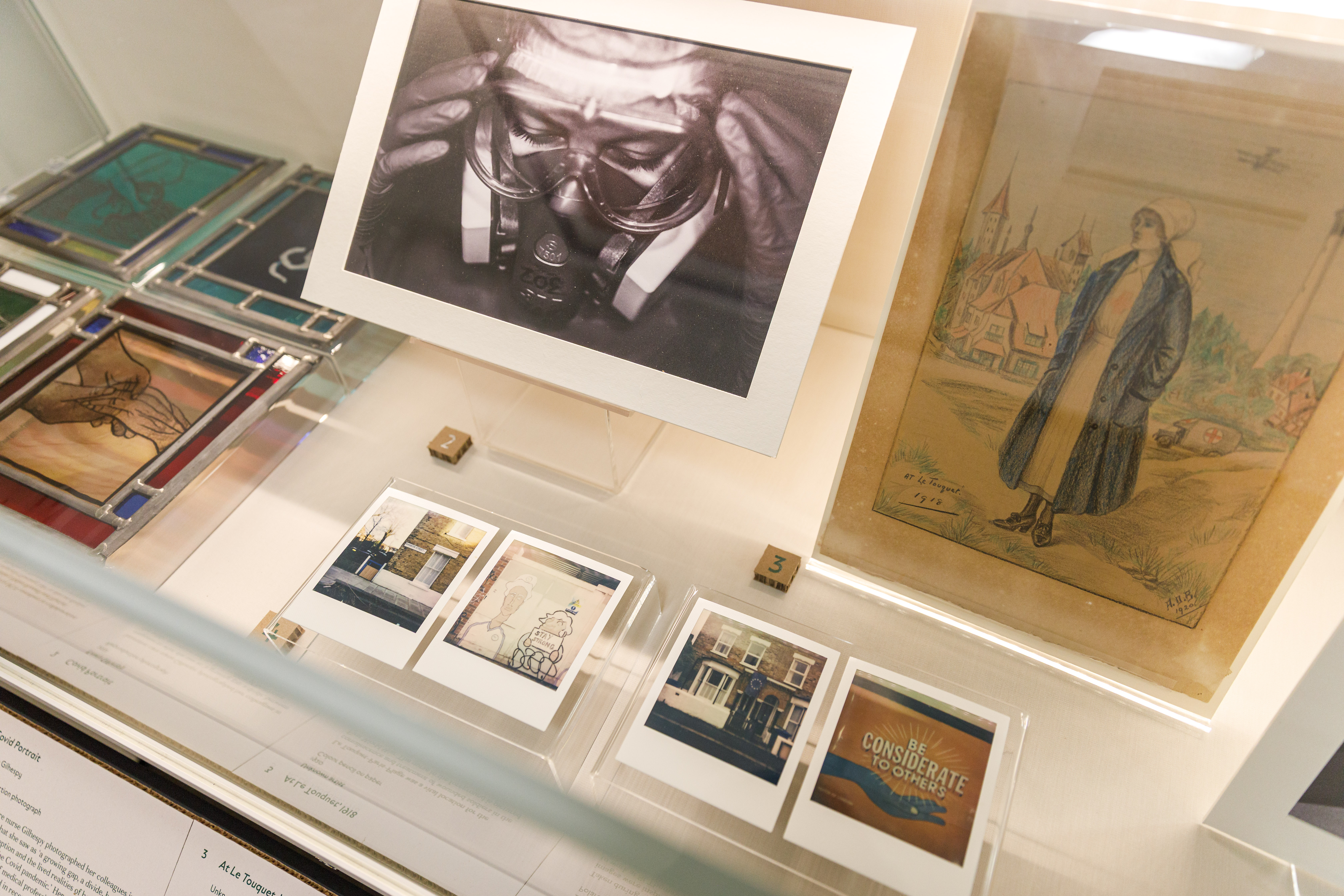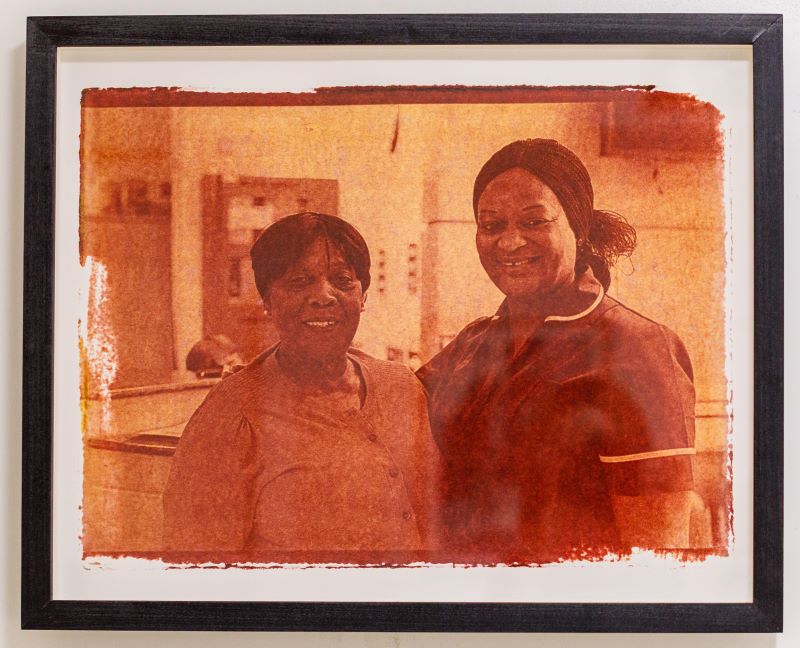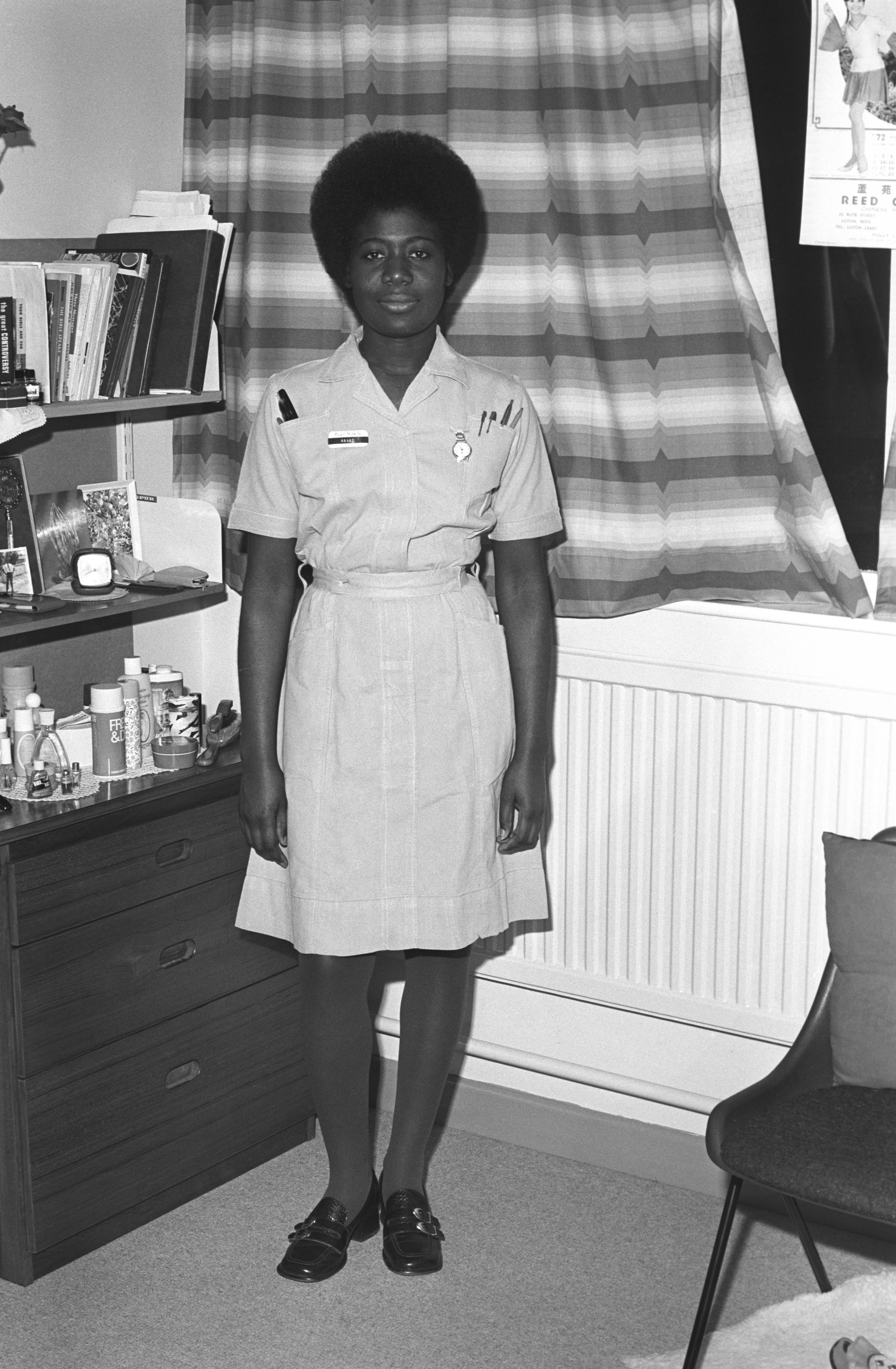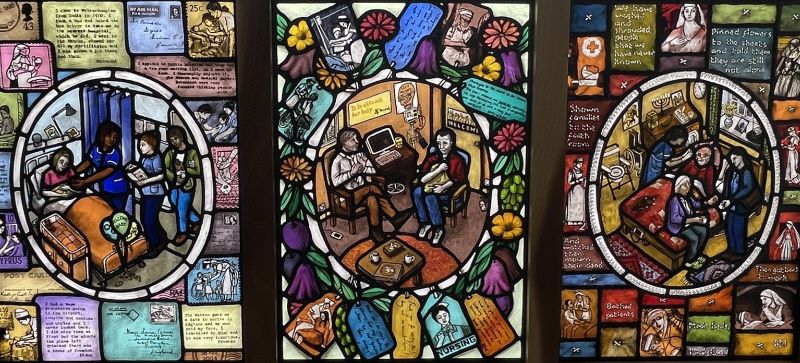Voices
From the Crimean War to COVID-19, the image of the nurse has been mobilised for political reasons – often in the service of colonial or nationalistic goals.
Conventional representations tended to define nursing as selfless, patriotic and feminine, and were often intended to drive recruitment.
Meanwhile some artists set out to challenge these stereotypes, and nurses themselves have harnessed the power of art to raise their voices and advocate for change.
College of Nursing poster
The female figure in this poster announces the arrival of the College of Nursing in the heart of London’s medical quarter. Towering above 20 Cavendish Square – which became the organisation’s headquarters in 1926 – her stance recalls early twentieth-century suffrage imagery showing women demanding the vote. Here, a single nurse promotes the value of solidarity and collective action within the profession.
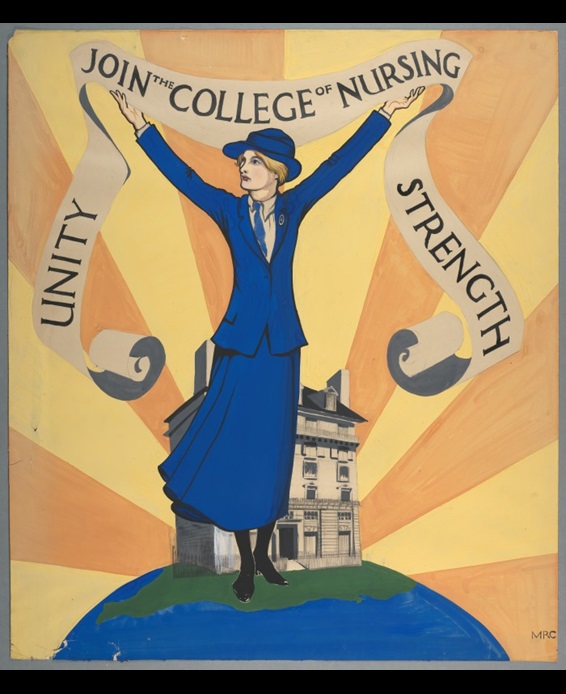
Image: College of Nursing poster, c.1926. RCN Archive.
Portraits
Portraits of nurses, both public and personal, have profoundly shaped our ideas about who nurses are.
These artworks raise issues around status and power and the question of who gets to be ‘in the picture’ in the first place, and who is absent.
Until recently, mainstream histories of nursing excluded marginalised communities on the grounds of race, class, disability and sexuality.
How would you like to be depicted – and remembered?
Nursing Life
These works celebrate and commemorate those aspects of nursing that are seldom acknowledged – the mundane and unheralded moments during which most of the work gets done. Artists involved in these encounters bear witness, drawing our attention to the formidable and endlessly responsive task of nurturing and sustaining life – aware that these acts of care are in themselves inherently creative.
Maternity 11, by Caroline Walker, 2021

Walker is interested in the often-hidden realities of women’s everyday working lives. These sketches were developed during her residency at the maternity wing at University College Hospital, London (UCLH). In a series of intimate portraits, she directs our attention to the complexity of nursing and the variety of interactions that take place between staff and patients. Walker has described how her own perception of this female-dominated space was defined first by her experience as an expectant mother and later as an artist
Image: Courtesy of the artist
Renewal
Engaging with art can be a powerful way to release stress and anxiety, and to transform painful experiences into something positive. While the impact of creative therapy on patients is well documented, here we highlight the unique capacity of art to enrich nurses’ own lives.
At the heart of the exhibition is a commission by the artist Peter Liversidge – which has resulted in hundreds of placards produced in conversation with RCN members.
How will you make your voice heard?
'Sign Paintings' by Peter Liversidge
'Sign Paintings' by Peter Liversidge
Made in workshops with RCN members around the UK and online, Liversidge has described how ‘the project is driven by a desire to make heard a multiplicity of nursing voices, setting up situations in which important questions can be asked about what it means to be a nurse and how to belong’.
Courtesy of the artist, Kate MacGarry, Ingleby Gallery, Sean Kelly Gallery, RCN members and the RCN Library and Museum

Credits
This exhibition was devised by the Royal College of Nursing Library and Museum in collaboration with RCN Members and support from the RCN Archive and History of Nursing Forum.
The RCN would like to thank all those whose contributions have been integral to the realisation of this display. We are particularly grateful to the artists and individuals who have generously lent their work and to the following creative consultants: Freya Bently, Marion Lynch, Jan Savage, Jane Salvage, Lucy Shanahan, Peter Liversidge and Pam Smith.
Curator: Kate Forde
Graphic Designer: Luke Gould
Graphic Production: Displayways
Technical Assistant: Harry Kidby
RCN Museum Team: Sarah Chaney, Antonia Harland-Lang, Laura Büllesbach, Kai Flynn
Exhibition photography: Justine Desmond
Exhibition webpage: Laura Büllesbach
